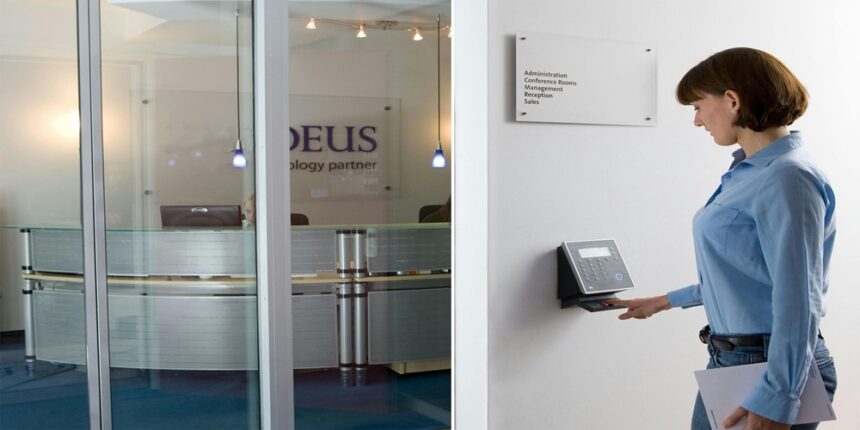In an increasingly interconnected world, the way we conduct financial transactions is evolving at lightning speed. Gone are the days of lengthy wire transfers and cumbersome currency exchanges. As digital innovation continues to reshape our lives, a groundbreaking solution is emerging on the horizon—biometric security! Imagine a banking experience where your identity is verified with just a touch or a glance, paving the way for seamless international transactions that are as safe as they are swift. In this blog post, we’ll explore how biometrics is not only simplifying global commerce but also revolutionizing our trust in digital finance. Buckle up as we delve into the cutting-edge technologies poised to redefine banking and empower consumers like never before!
Introduction to the current state of international banking transactions
In a world that is increasingly interconnected, international banking transactions have become an essential part of our daily lives. Whether you’re sending money to family overseas or making a business deal across borders, the current process can often feel cumbersome and fraught with delays. Traditional methods can be slow, costly, and sometimes insecure.
But what if there were a way to streamline these processes? Enter biometric authentication—a revolutionary approach that promises not just to simplify cross-border banking but also enhance security like never before. Imagine verifying your identity with just a fingerprint or facial recognition instead of complicated passwords and lengthy verification steps. This technology is no longer in the realm of science fiction; it’s becoming reality.
As we explore how biometric authentication is transforming international transactions, we’ll uncover its benefits, challenges, and the exciting future possibilities it holds for global finance. Buckle up—this journey into the future of banking might just change how you think about managing your finances across borders!
The rise of biometric security and its impact on banking
Biometric security is transforming the landscape of banking. With increasing threats to data privacy, traditional methods are struggling to keep pace. Passwords and PINs can be forgotten or compromised, leaving vulnerabilities.
Enter biometric authentication. This technology uses unique physical traits like fingerprints, facial recognition, and iris scans for secure access. It’s not just about convenience; it’s a game-changer in preventing fraud.
The impact on banking is profound. Financial institutions can now offer seamless transactions while enhancing security measures. Customers feel more confident knowing their identities are protected by something they cannot lose or forget.
As adoption grows, so does the potential for innovation in services offered by banks globally. The integration of biometrics means that cross-border transactions could become faster and safer than ever before.
Examples of biometric authentication in the banking industry
Banks around the globe are leveraging biometric authentication to enhance security and streamline transactions. For instance, many financial institutions now utilize fingerprint recognition for mobile banking apps. This technology allows customers to quickly log in without needing complex passwords.
Facial recognition is another popular method gaining traction. Some banks employ this feature at ATMs, enabling users to withdraw cash simply by looking into a camera. It’s swift and eliminates the risk of card skimming.
Voice recognition also plays a role in customer service systems. Clients can authenticate their identity during phone calls using their unique voice patterns, making it easier for them to access account information securely.
These advancements are transforming how we interact with our finances, paving the way for a more secure future in cross-border banking.
Benefits of using biometrics for international transactions
Biometric authentication offers numerous advantages for international transactions. First, it enhances security. By using unique biological traits like fingerprints or facial recognition, banks can significantly reduce the risk of fraud.
Speed is another major benefit. Traditional methods often require multiple steps for verification. Biometrics streamline this process, allowing users to authenticate quickly and efficiently.
User convenience cannot be overlooked either. Customers no longer need to remember complex passwords or carry physical tokens. Their biometrics are always with them, making access seamless.
Additionally, biometric technology fosters trust in cross-border banking. With higher security standards in place, customers feel more confident conducting transactions abroad.
Finally, adopting biometrics helps financial institutions comply with regulatory requirements related to identity verification while also improving overall customer satisfaction through enhanced service delivery.
Challenges and concerns surrounding biometric security in the banking sector
Despite its advantages, biometric security faces several challenges in the banking sector. Privacy concerns loom large. Many consumers worry about how their personal data is collected, stored, and utilized. The fear of identity theft or unauthorized access increases hesitation.
Then there’s the issue of reliability. Biometric systems can sometimes fail to recognize legitimate users due to various factors such as changes in appearance or technical glitches. This could lead to frustration for customers trying to access their accounts.
Moreover, implementation costs are significant for banks transitioning from traditional methods. Upgrading infrastructure requires substantial investments that not all institutions can afford.
Finally, regulatory frameworks surrounding biometrics remain inconsistent across regions. Banks navigating these regulations may face legal hurdles while trying to innovate and enhance security features effectively.
Future possibilities of biometric authentication for cross-border transactions
The future of biometric authentication in cross-border transactions holds immense promise. As technology evolves, we can expect more sophisticated methods that enhance security and streamline operations.
Imagine seamless verification processes using advanced facial recognition or fingerprint scanning. These technologies could significantly reduce the time spent on identity checks, making international banking faster than ever.
Furthermore, integrating biometrics into mobile applications will empower users to complete transactions from anywhere in the world with a simple touch or glance. This convenience can attract new customers and improve loyalty among existing ones.
Moreover, as global regulations regarding data protection become stricter, biometric solutions may provide an edge. They offer unique identifiers that are harder to replicate compared to traditional passwords or PINs.
In this landscape, banks will likely explore partnerships with tech companies to innovate further and stay ahead of fraudsters while enhancing user experience across borders.
Comparison with traditional methods of authentication
Traditional methods of authentication often rely on passwords, PINs, or security questions. While these systems have been in place for years, they come with significant weaknesses.
Passwords can be forgotten or stolen. They are susceptible to phishing attacks and data breaches. Many people reuse the same password across multiple sites, increasing risk.
In contrast, biometric authentication utilizes unique physical traits—like fingerprints or facial recognition. This makes it nearly impossible for someone else to replicate your identity.
Moreover, traditional methods require users to remember complex combinations of characters. Biometric solutions streamline this process by providing instant access without memorization.
The speed and convenience offered by biometrics create a stark difference in user experience compared to older authentication practices. As international banking evolves, these factors will play a crucial role in shaping security strategies moving forward.
How biometrics can improve customer experience in international banking
Biometric authentication simplifies the banking experience for customers around the globe. With just a fingerprint or facial scan, users can access their accounts in seconds. This creates a seamless transition between different currencies and border regulations.
Imagine traveling abroad without worrying about forgotten passwords or security questions. Biometrics eliminates these hurdles, allowing for smooth transactions with minimal effort.
Additionally, enhanced security measures give customers peace of mind. They know that their sensitive information is safeguarded by technology that is difficult to replicate.
Banks can also personalize services by analyzing biometric data patterns. This means tailored offers and recommendations based on individual customer behavior emerge naturally.
As more people embrace global travel and commerce, biometrics will redefine accessibility in international banking. A smoother experience awaits every user who values convenience alongside security.
The potential for a more secure and efficient future of international banking with biometrics.
The integration of biometric authentication in cross-border banking presents a transformative opportunity. This technology not only enhances security but also streamlines processes that have historically been cumbersome and slow. The ability to verify identity through unique biological traits can significantly reduce the risk of fraud, ensuring that transactions are both safe and swift.
Moreover, as more banks adopt these systems, customers will likely experience a level of convenience previously unseen in international banking. Imagine completing transactions from your smartphone with just a fingerprint or facial recognition—this could become the norm rather than the exception.
With continuous advancements in biometric technologies, we are on the brink of reimagining what secure international banking looks like. The potential for increased efficiency combined with robust security measures signifies an exciting evolution in how we conduct financial transactions across borders.
As stakeholders embrace these changes, they pave the way for a future where sending money globally becomes easier and safer than ever before. Biometric authentication is not merely a trend; it’s set to redefine our interaction with banking on an international scale.
Conclusion
As the world becomes increasingly interconnected, the need for simplified and secure international transactions is greater than ever. Biometric security offers a promising solution to this issue, providing a convenient and efficient way to verify individuals’ identities. With advancements in technology, we can expect biometric security to become even more prevalent in the banking industry, making global transactions seamless and secure. This innovative approach towards banking reflects how our society is constantly evolving with new technologies, allowing us to streamline processes and improve overall efficiency. The future of banking is undoubtedly exciting as we continue to embrace cutting-edge solutions like biometric security.








